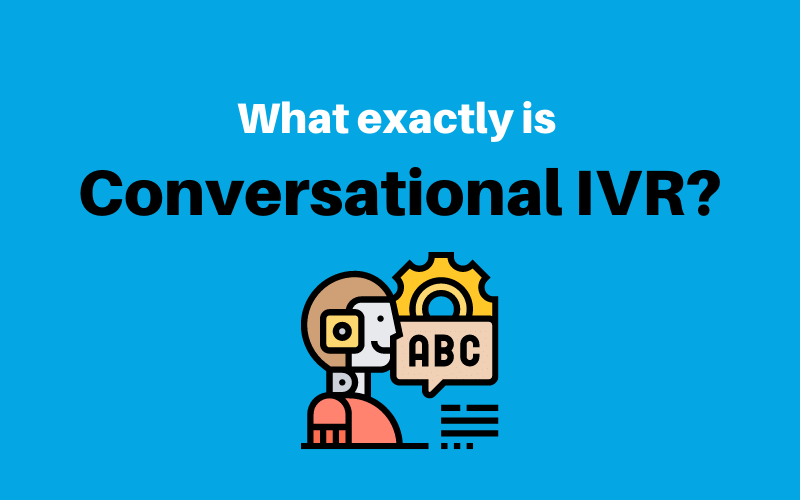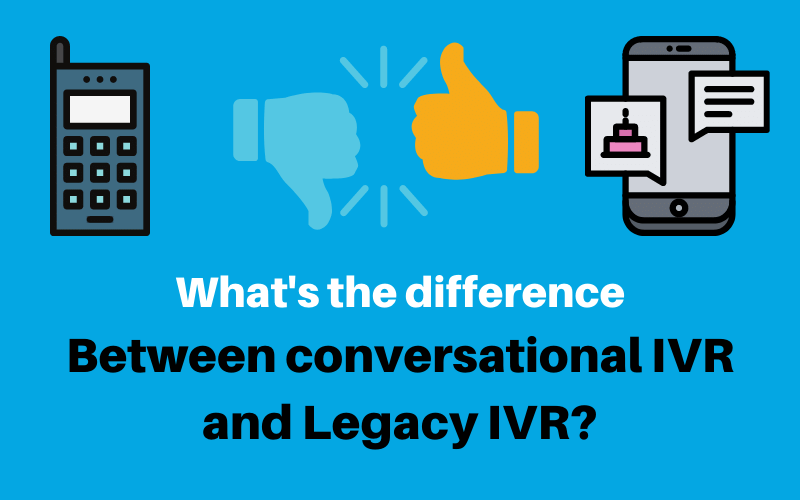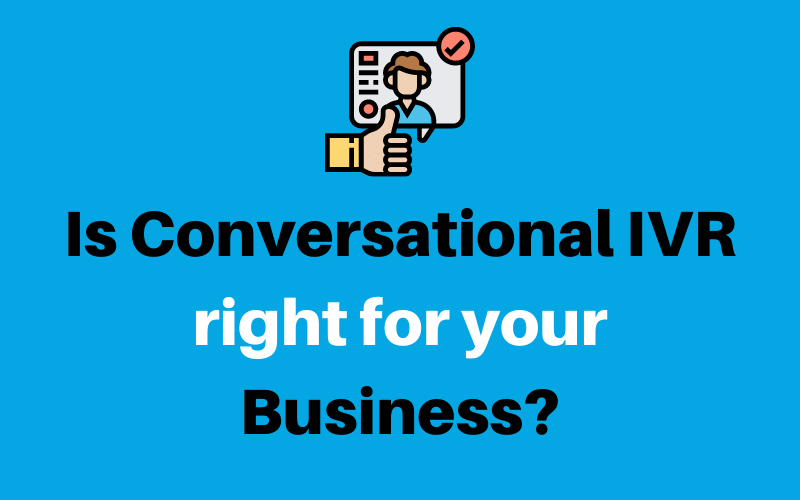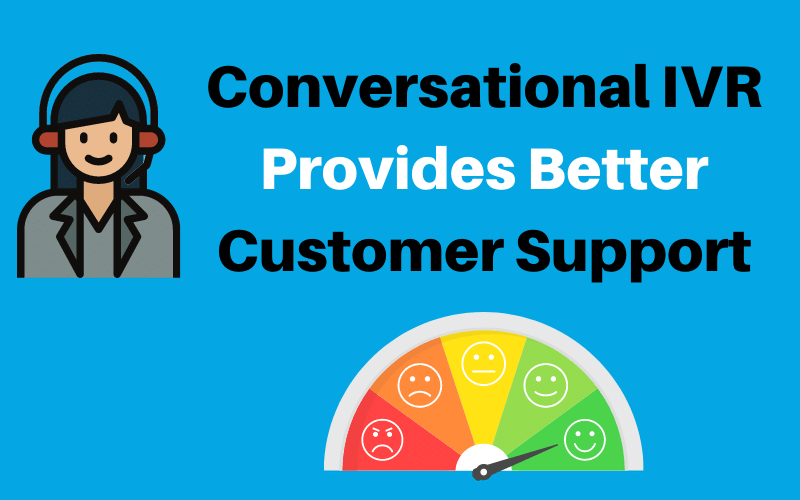A Guide to Conversational IVR

So what is conversational IVR (Interactive Voice Response) and why should businesses care.
According to Forrester Research, customers expect easy and effective customer service that builds positive emotional connections every time they interact with a brand or organization.
For businesses improving their organization’s customer experience is a high priority.
Additionally, 40% of surveyed business leaders say that improving their organization’s customer experience (CX) is a high priority, ahead of initiatives like improving products and differentiation and reducing costs.
Despite the growth of customer service via chat and email, dialing a phone number is sometimes the best option for clients to make initial contact, resolve issues, and receive customer support. Whilst for some use-cases such as the university clearing process, it’s the norm.
Unfortunately, most outdated legacy interactive voice response (IVR) systems were never designed with CX in mind and unable to handle nuanced customer enquiries which a menu system is not designed to address. At the same time, some businesses can’t afford the staff to take phone calls 24/7 or provide enough capacity to manage spikes in demand.

What exactly is Conversational IVR?
Conversational IVR is a software system which uses voice commands from customers to allow them to interact with IVR systems over telephony channels.
The development of voice gateways has enabled modern chatbots to be connected to pre-existing telephony engagement channels via SIP/RTP and as a result massively extended the reach of chatbot technology into contact centres, enquiry numbers and helpdesks across all industries.
Voice gateways provide the technology to connect Telephony services over SIP to chatbots. For example Audiocodes PNC Voice.AI Gateway.
Bringing natural language processing(NLP) to standard telephony systems means both intent and context can be understood by these systems. It removes the burden on customers to navigate through slow, confusing and hierarchical menus and simple voice implementations of legacy IVR. And it lets customers self‑serve and resolve issues within the IVR System.
Conversational IVR takes auto-attendants and IVRs to the next level providing human like experience by enabling more human-like multi-turn interactions, leveraging natural language processing, artificial intelligence, and machine learning.
The ability to act on enquiries by extracting intent and variables from a conversation means that a conversational IVR system has the potential to work through customer enquiries, field/re-route calls effectively and enrich customer support over telephony channels.

What’s the difference between conversational IVR and legacy IVR?
The IVR systems have been around for nearly five decades now. The technology’s commercial application was rolled out in 1973 and has 1000s of present-day implementations.
In its simple guise, IVRs are a touch-tone input and voice output system. Pre-recorded messages prompted callers to put in their request by pressing keys on a phone. Unfortunately although advanced at the time, the large menus, numerous options, and using the same handset to key in inputs and listen to the voice prompts makes the experience cumbersome and not really fit for purpose when providing modern customer support.
Traditional automated call center solutions ultimately depend on number selections or similarly basic input from the customer and have minimal ability to adapt; particularly annoying when someone makes a mistake with their input such as pressing one wrong button while entering a long account number. Accessing the correct information can often be frustrating with nested menus.
Whereas traditional IVR systems had speech recognition technology to handle simple voice commands such as “yes” or “no,” conversational IVR allows people to communicate their inquiries in more complete phrases via a natural language understanding. Callers can describe questions or concerns in their own words which are then matched to intent by natural language understanding.
Leveraging machine learning to improve the NLP capability, therefore, allows modern natural language processing systems to be trained to understand 1000s of different intents (questions) with each one of these intents being asked in 100s of different ways. This also means that smart IVRs can continue to improve whilst still handling failures gracefully. For example, if a caller says something which the system does not understand, it can redirect to a live agent via intelligent call routing or instead ask further qualification questions such as requesting a customer to spell out their specific details. The next time the smart IVR encounters this question(utterance) it will have learned from past experience and fully understand this enquiry.
Systems can also leverage advanced metrics such as sentiment to streamline conversations and improve customer experience with a more human-like interaction.
The best conversational IVRs enable a more free, human-like service experience for customers, who aren’t bound to a specific menu script. These smart IVRs are more capable of guiding customers toward self-service-type solutions instead of involving a live agent. Not only does this maximizes employee productivity, handle time, money saved on staffing costs, but in a best-case scenario, it makes for happier customers who get fast, personalized responses from an automated system that isn’t entirely stripped of the human touch.

Is conversational IVR right for your business?
Bigger organisations fielding large volumes of calls are likely to benefit the most from conversational IVR. However, if you experience spikes in demand and your agent’s struggle with timely answers to some of the calls they handle in peak times then a conversational IVR system may bring a ROI sooner than you expect.
Anywhere that there is repeat demand for a specific customer enquiry could mean that the intelligent use of conversational IVR could remove a business pain point, impacting call center and customer service staff positively.
Due to the flexibility of smart IVR systems, it’s often easy to create a proof of concept implementation to validate and test specific use-cases before investing fully in a system.
Voice gateway technology also enables modern IVR to connect easily with current legacy systems.

What are the benefits of using conversational IVR
Its important to understand how conversational IVR can be leveraged to cut budgets, increase efficiency, improve customer satisfaction and meet spikes in demand.
Serve your customers faster with more precision
Conversational IVR reduces the amount of time needed to support each client. It often decreases the time taken to serve customers as users are often able to request their intention with one sentence, rather than navigate through confusing menu systems.
Leveraging natural language and machine learning to improve responses therefore enables Conversational IVR systems to always be improving and still be flexible enough to be easily changed to meet new questions and offer more detail where needed.
Cut costs
Its difficult to calculate the average cost of a live agent customer service phone call due to the number of variables. However there is no denying the need. In one report, IBM reported that worldwide companies spend over $1.3 trillion to serve 265 billion customer calls each year.
In a report by Forrester¹ on the total economic impact of smart IVR technology the projected return on investment (PROI) was judged to be between 103% and 291% over 3 years. Most organisations would benefit from using conversational IVR to satisfy customers without using a human agent. Financial gains are seen from:
- Reducing the number of calls reaching human agents by improved initial resolution rates and containment.
- Improving agent efficiency with augmented technology such as agent assist and predictive analytics.
- Improving customer satisfaction and agent experience by reducing the burden on agents so they can focus on addressing each customer’s specific request or need.
¹ New Technology: The Projected Total Economic Impact™ Of Google Cloud Contact Center AI 2020
Improve customer satisfaction
It’s no surprise that historical feeling towards automated phone services was negative due to the poor customer experience from legacy IVR systems. Overall voice was often judged suspiciously. These days opinions are shifting toward acceptance amid the rising adoption of personal assistants such as Google Assistant, Siri, Cortana, and Alexa on smart device and mobile. People are increasingly familiar with these technologies, the ways they can be used, and their limitations. Customer satisfaction numbers for popular voice-controlled assistants are as high as 80% or better depending on the platform and survey.
Users realise that they can get more done with voice these days. At the same time voice technology and capabilities such as agent assist can also empower agents to provide better service. With the careful implementation and design of voice assistants it’s possible to achieve higher levels of customer care and improved efficiency and as a result provide a better service for your customers.

Conversational IVR Provides Better Customer Support
Customer satisfaction is a critical concept for customer success professionals to understand and live by, and it’s actually about more than a money-back guarantee.
Conversational IVR modernizes conventional IVR principles with innovations such as AI and machine learning. Instead of navigating push-button menu flows, users can provide spoken inquiries reducing the friction and poor user experience of legacy systems. Smart IVR has the ability to provide responses to complex enquiries and give a response in real-time within seconds. Tasks that used to require a lengthy phone call can now often be done quickly and easily.
At the same time technology can be leveraged to provide streamlined features: sentiment analysis, call routing, fall-back handling, even energy detection tracking to provide better support. And if the customer needs to speak to someone or requests to do so, we can connect them to an agent seamlessly and retain all the information already shared in the chat.
The end result is that this allows conversational IVR systems to complete requests faster via customer self-service options in real-time. Along with maximizing efficiency and helping to offset spikes in call volume, call center costs are reduced by lowering customer churn, boosting brand perception, and improving client retention.
